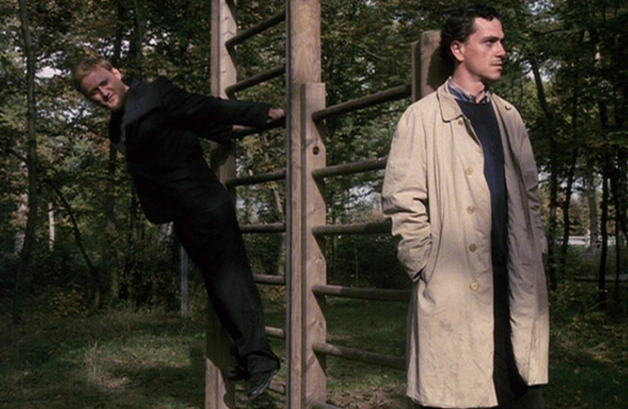
A lot of the times, both in the movies and in life, you find that the scariest things out there aren’t bogeymen or Frankensteins or guys dressed in masks, but just normal dudes. The Vanishing explores this idea – the idea of an ordinary guy with a heart of darkness lurking underneath, and how that darkness can manifest in disturbingly inhumane ways. It also explores how one reacts to a moment in time that seems fleeting at the time, but will come to haunt you for years to come. But most of all, its defined by its peculiar structure, and the way it’s used to wring tension out of a very real kind of horror.
The Vanishing begins quite simply, with a Dutch couple, Rex and Saskia, who are on vacation in France, roadtripping through the countryside and just kinda doing silly, playful couple stuff. They then stop at a gas station to fuel up, while Saskia goes to pick up some drinks at the convenience store, while we see a suspicious man wearing a fake cast in a sling in the background. After a while, Rex becomes curious where Saskia has gone off to, and ultimately cannot find her, which sends Rex into a panic.
We then cut to some time earlier, where Raymond, a wealthy family man, and also the guy in the sling, is at his Dutch cottage, doing mild-mannered family stuff while also sneaking off to rehearse his kidnapping techniques. From there, the film jumps around in time, between Raymond’s devious preparations, the day of the kidnapping, and years later, when Rex finally tracks down Raymond.
As you’ve probably gathered already, this clearly fits Hitchcock’s definition of a suspense picture, in which the audience knows all the information about the killer, while we wait in anticipation for what will happen to the next victim. Because we get to know Raymond quite intimately, as we see him playing this cat and mouse game with Rex, while he ruminates quite openly about the weird fate of Saskia being in that rest stop on that particular day. As Raymond is quite transparent about the fact that it didn’t really matter who he kidnapped, he just had to do it.
The psychology of a serial killer or psychopath is not something I’ve ever had a ton of interest in exploring, but I feel like The Vanishing does do a good job of tapping into that psychology. Mainly because as much as it tries to lay out why this guy had to do this thing that would clearly cause pain to others, it’s never all spelled out. Because how do you explain that kind of human cruelty? You can’t. So instead The Vanishing manages to put all the puzzle pieces in front of you, but without putting them all together perfectly, or explaining why they were put there in the first place. And yet, somehow you know that it all fits. Even if you don’t want it to.


